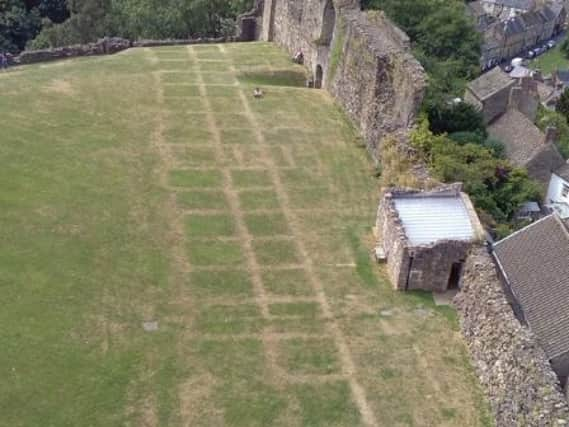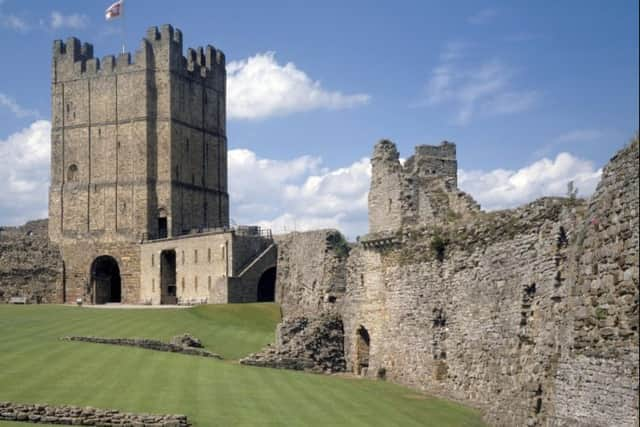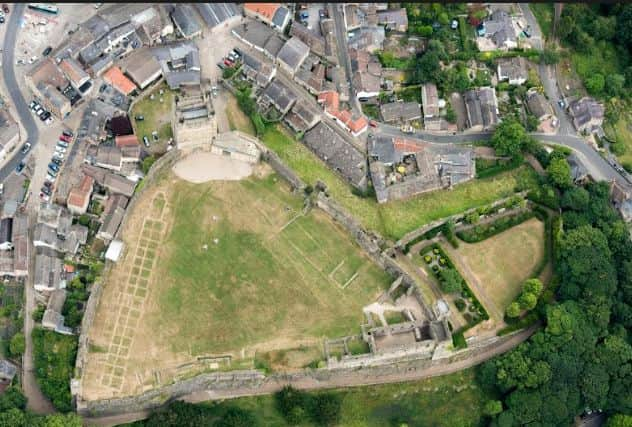Dry summer reveals foundations of Victorian army barracks demolished in 1931 at Yorkshire castle


The phenomenon, caused by the lack of rainfall, has been in evidence at a number of historic sites around the country the heatwave.
At Richmond Castle in North Yorkshire, patterns in the grass clearly show the outline of what was once a local militia barracks in the courtyard.
Advertisement
Hide AdAdvertisement
Hide Ad

The 19th-century building ran alongside the west curtain wall of the medieval castle, but was demolished in 1931.
The castle, now managed by English Heritage, was built in the 11th century and later fell into ruin before it was repaired to serve as the headquarters of the North Yorkshire Militia in 1855.
Robert Baden-Powell, the founder of the Scout movement, was based there from 1908-10 when he was an officer commanding the Northern Territorial Army reserve force.
Advertisement
Hide AdAdvertisement
Hide Ad

During World War One, the castle was the base of the Non-Combatant Corps - a unit of conscientious objectors who refused to fight but who performed other military support duties.
It was also used to imprison men who refused to join the army in any role, including sixteen who were later taken to France and sentenced to death before they were instead given ten years' hard labour.
A project to preserve graffiti left by inmates of the cell block during this period has been shortlisted in the National Lottery Awards after the walls were repaired to protect around 2,500 etchings and drawings.
Parch marks also revealed the location of a lakeside mansion at Clumber Park in Nottinghamshire which was demolished after a fire in 1938 earlier this summer.